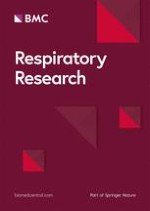Abstract
Background
Airway remodeling is a significant contributor to impaired lung function in chronic allergic airway disease. Currently, no therapy exists that is capable of targeting these structural changes and the consequent loss of function. In the context of chronic allergic inflammation, pericytes have been shown to uncouple from the pulmonary microvasculature, migrate to areas of inflammation, and significantly contribute to airway wall remodeling and lung dysfunction. This study aimed to elucidate the mechanism by which pulmonary pericytes accumulate in the airway wall in a model of chronic allergic airway inflammation.
Methods
Mice were subjected to a protocol of chronic airway inflammation driven by the common environmental aeroallergen house dust mite. Phenotypic changes to lung pericytes were assessed by flow cytometry and immunostaining, and the functional capacity of these cells was evaluated using in vitro migration assays. The molecular mechanisms driving these processes were targeted pharmacologically in vivo and in vitro.
Results
Pericytes demonstrated increased CXCR4 expression in response to chronic allergic inflammation and migrated more readily to its cognate chemokine, CXCL12. This increase in migratory capacity was accompanied by pericyte accumulation in the airway wall, increased smooth muscle thickness, and symptoms of respiratory distress. Pericyte uncoupling from pulmonary vessels and subsequent migration to the airway wall were abrogated following topical treatment with the CXCL12 neutraligand LIT-927.
Conclusion
These results provide new insight into the role of the CXCL12/CXCR4 signaling axis in promoting pulmonary pericyte accumulation and airway remodeling and validate a novel target to address tissue remodeling associated with chronic inflammation.


No comments:
Post a Comment